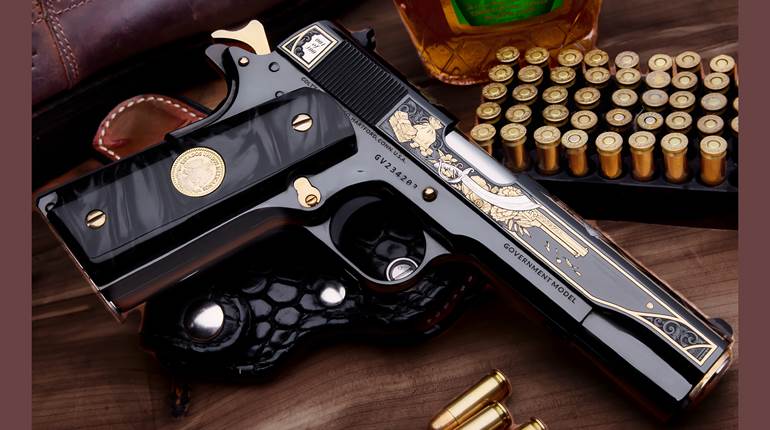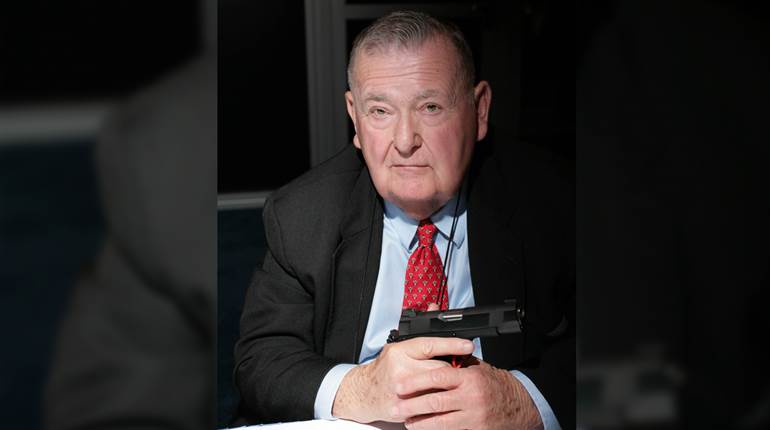
I can well recall a time where handgunners had limited choices in what they saw when they raised ol’ Betsy to eye level and got ready to make war. Of course, no handgunner worthy of the name was ever looking at anything but the sights. And the makers of those sights must have figured that everyone who was using their gun had magnifying eyesight, because the sights were tiny. In the pre-WWII era, two of America’s favorite handguns were the Colt 1911A1 .45 auto and the S&W M&P .38. I have fired both in the original configuration and the sights are near-hopeless. Both are still made and both now have sights with larger front blades and wider rear notches. Big progress on that point. But, as handgunning sports proliferated and defensive handgunning grew more necessary, shooters and makers began to put various gizmos on their sights to make them easy to see.
Gold or ivory beads on a front sight have a long history in handgunning. S&W’s Registered Magnum of 1935 offered a wide array of sight options, including plain black. ‘Smith was pretty much the pioneer in front sight options with their popular red ramp front and white outline rear, as well as yellow or white ramps or posts. For quite a while there in the revolver era, the red ramp was the standard, but about the time the shift to the automatic pistol came about, we began to see the dots. Usually there were three dots, one on the front sight and another on either side of the rear sight notch. Just line ‘em up and go to work. Sometimes the dots were colored: white-red-white or red-yellow-red or even red-white-blue (I saw it, I swear I did). These days, we see a lot of night sights, where the dots are tritium inserts. You really can line these things up very nicely, even in total darkness. Then you have another problem-perfect sight alignment on something you can’t see-or identify. Most of these things have some value in one situation or another and therefore, we have progress.
It’s up to the shooter and I would encourage folks to try anything that seems to give them an edge. For me, the breakthrough came in using a really wide notch with a small gold bead out front. It is the only system I have ever shot that I can use with both eyes open.





































